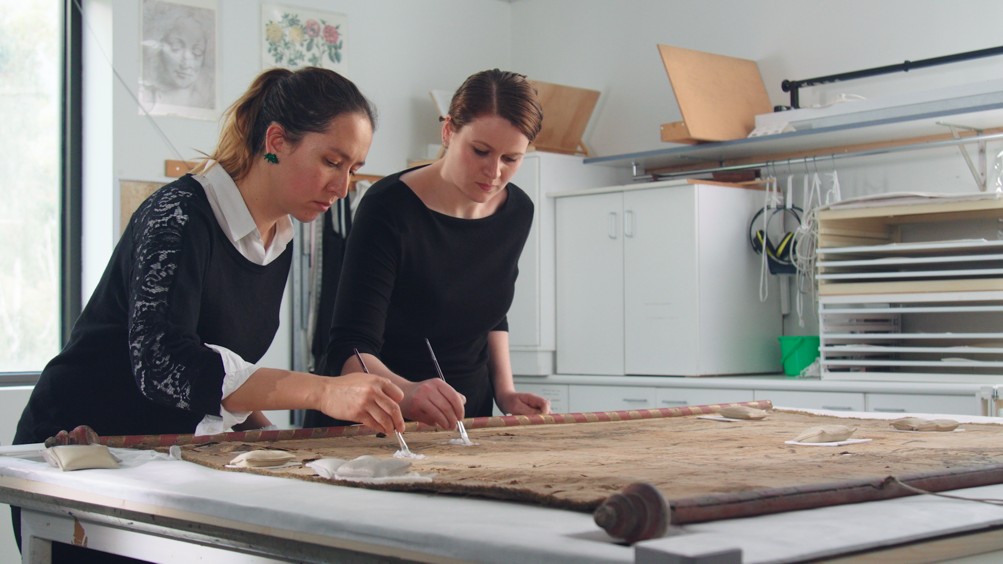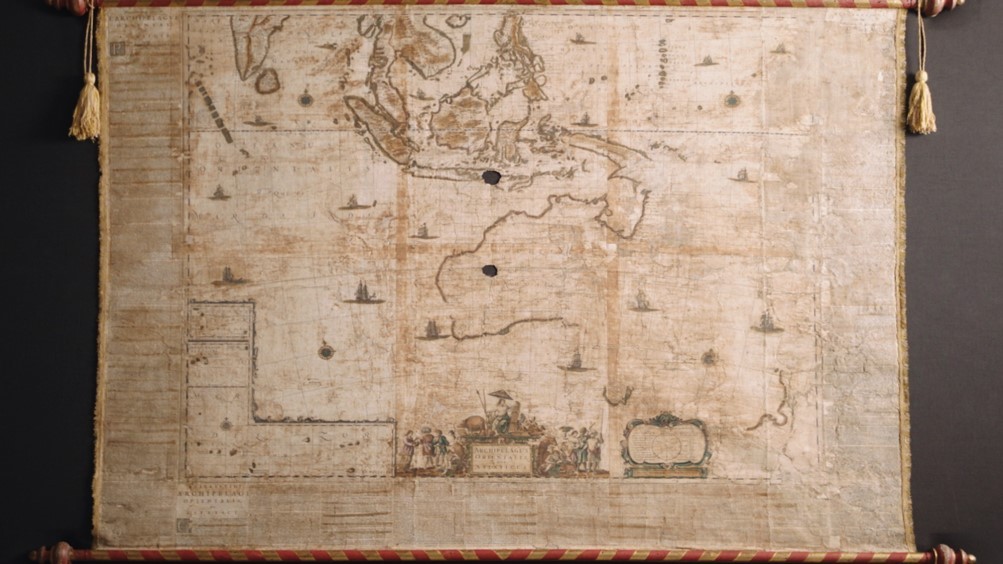Grimwade Conservation Services win Australia’s foremost cultural conservation award

A masterful restoration of a pair of exquisite 17th century wall maps has earned the Grimwade Centre the award for Outstanding Conservation Treatment of the Year.
The Grimwade Centre took out the prestigious honour at the 2021 Australian Institute for the Conservation of Cultural Material (AICCM) award ceremony, which recognises excellence and industry best practice in the field of conservation.
The AICCM jury described Grimwade’s treatment of the maps as an “exceptional example of research, skill, and collaboration between specialisations.” The jury were “impressed by the scale and complexity of the treatment” and the “beautiful results.”
Professor Robyn Sloggett, the Director of the Grimwade said, “this acknowledgment of the excellent work undertaken at Grimwade Conservation Services, by Australia’s national professional conservation body, is a fitting tribute to the highest standards of professionalism, skill and knowledge demonstrated by the team.”
The maps, which are over 350-years old, were produced in the workshop of Master Cartographer for the Dutch East India Company, Joan Blaeu (1596-1673), and are amongst only a small few to have survived from this era. They are the rarest formats of Dutch Golden Age maps in existence.
The maps are also recognised for their cultural and historical significance as they showcase the first publication of European sightings of the west coast of Tasmania, and the first published use of the names ‘Niew Hollant’ (New Holland) and ‘Nieuw Zelandt’ (New Zealand).

Libby Melzer, head of Paper Conservation at the Grimwade who led the project team said, “as well as being significant for their place in the history of the mapping of Australia, these rare and beautiful maps were precious objects in their day. They are material artefacts of the society that created them and the value they placed on cartography.”
“This pair of maps are particularly special because they retain so many of their original components including their striped batons and gold silk fringes,” said Melzer.
The maps had spent the previous century in a private home in Italy and had been hung for several decades with very little intervention to preserve them. The purchase of the maps and their extensive conservation treatment was funded by the Wilson Family, foundation supporters of MONA, where the maps are currently on display.
“Before conservation treatment, the maps were very fragile and dirty. There were large tears in the fabric lining and the paper was peeling away in many areas,” said Melzer.

Although Grimwade staff had conserved similar maps in the past, the Blaeu maps presented unique challenges given the diverse nature of the different components and the imperative to not interfere with their original structure.
Christine Mizzi, a recent graduate of the Grimwade’s Master of Cultural Materials Conservation course who worked on the project said, “the process required a diverse range of analytical and practical skills due to the scale and intricacies of the work.”
“I enjoyed the complexity of the restoration, and the opportunity to apply and strengthen the skills learnt during my Master’s degree,” said Mizzi.

Members of the team that restored these magnificent maps were drawn from the full breadth of specialisations at the Grimwade Centre and included; Libby Melzer, Project Lead (Senior Conservator, Paper and Parchment); Peter Mitchelson (Paper and Books conservator); Jordi Casasayas (Frame Conservator); Jacinta Brown (Principal Conservator, Objects and Textiles); Victoria Thomas (Textile Conservator); Noni Zachri (Paper and Photographs Conservator); Christine Mizzi (Graduate Conservator); Briony Pemberton (Paper Conservator); Lois Waters (Paper Conservator).
- Read more about the Master of Cultural Materials Conservation
- Read more about Grimwade Conservation Services